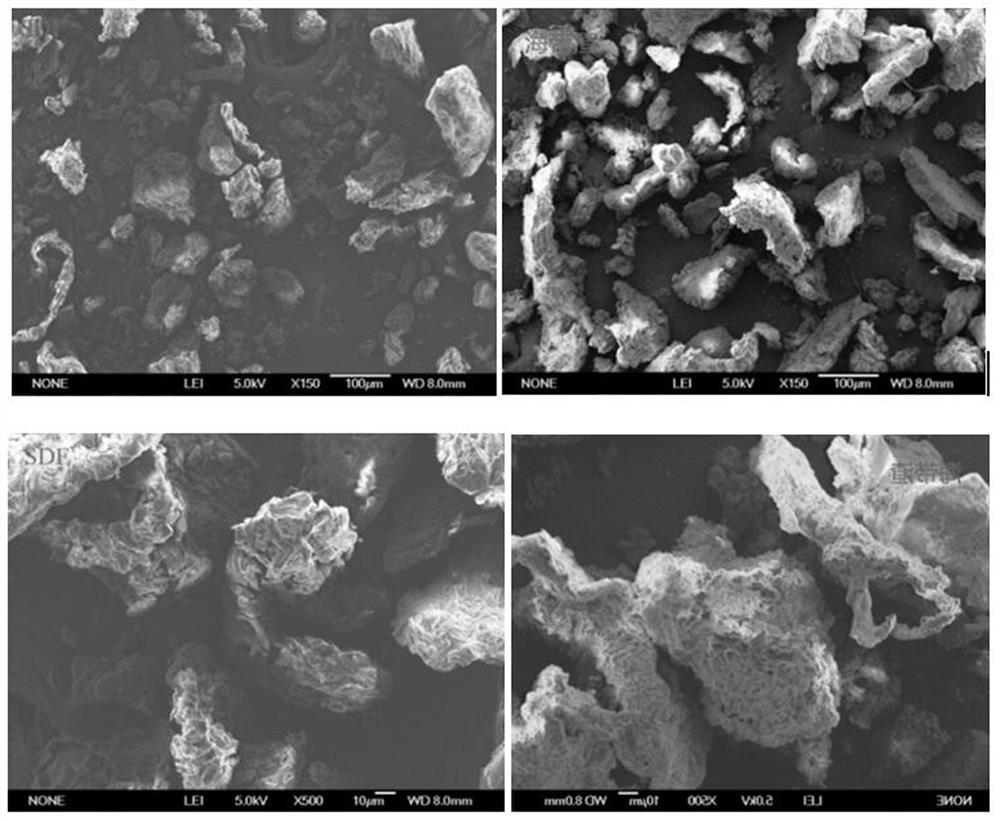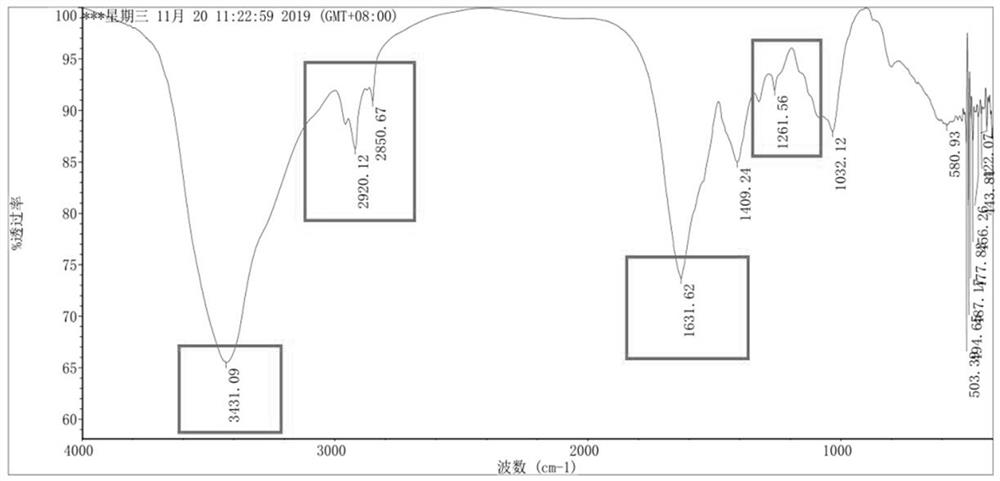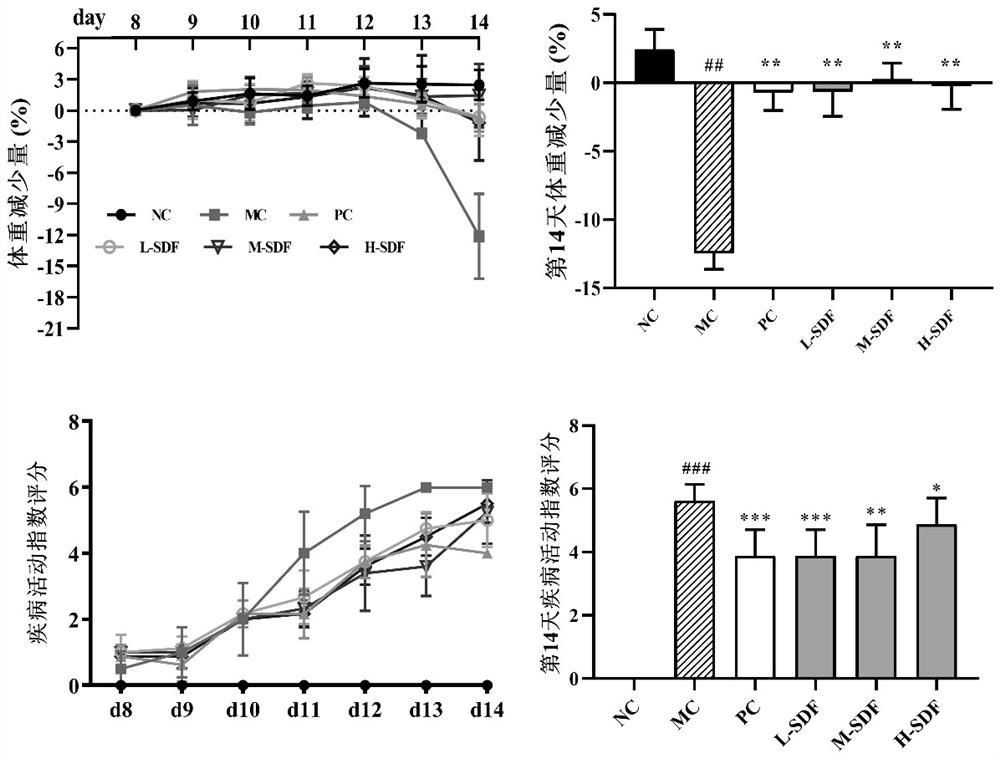Application of soluble dietary fiber in kelp in preparation of medicine and functional food for improving ulcerative colitis
A technology for ulcerative colitis and functional food, which is applied in the application field of medicine and functional food, can solve the problems of large side effects, etc., and achieve the effects of increased absorption, high safety and safe use
- Summary
- Abstract
- Description
- Claims
- Application Information
AI Technical Summary
Problems solved by technology
Method used
Image
Examples
Embodiment 1
[0044] The extraction method of soluble dietary fiber among the present invention comprises the following steps:
[0045] (1) Add 5% NaCl solution to the kelp residue according to the ratio of solid to liquid ratio of 1:30, and heat at 90°C for 7 h for decalcification treatment;
[0046] (2) Centrifuge to remove the supernatant, add an appropriate amount of pure water to the precipitate and boil for 30 minutes;
[0047] (3) Add 5 mol / L NaOH solution to the precipitate in step (2) according to the ratio of solid to liquid 1:30, adjust the pH to 13, and heat at 90°C for 6 h;
[0048] (4) Centrifuge and collect the precipitate as SDF;
[0049] (5) SDF is adjusted to neutral pH with HCl, concentrated by rotary evaporation, dialyzed in a 1500 Da dialysis bag for 10-12 h, placed in a -80°C refrigerator for 12 h, and then freeze-dried for 36 h to obtain dry soluble dietary fiber .
Embodiment 2
[0050] Example 2: Identification of the basic structure of kelp soluble dietary fiber (SDF)
[0051] 1. Molecular weight distribution and monosaccharide composition of soluble kelp dietary fiber
[0052] The molecular weight distribution and monosaccharide composition of the soluble kelp dietary fiber prepared in Example 1 were investigated using GPC and HPLC respectively.
[0053] Complete acid hydrolysis: Take an appropriate amount of sample in a hydrolysis tube, add 1 mL of 4mol / L TFA (trifluoroacetic acid), and hydrolyze in an oven at 120°C for 2 h. After taking it out, dry it with nitrogen gas; derivatization reaction: add 1 mL 0.5 mol / L PMP-methanol solution and 0.5 mL 0.3 mol / L NaOH solution to the dried sample, 70 °C water bath for 60 min, cool, add 0.5 mL 0.3 After adding mol / L HCl solution, add 0.5 mL chloroform, oscillate and shake well, then let it stand for 20 min, discard the lower layer, extract three times, and take the water layer to pass through the membrane...
Embodiment 3
[0067] Select C57BL / 6 mice (male), 7-8 weeks old, body weight 25-28g, rearing temperature 20-24°C, humidity 40%-60%, free to drink water and eat during the period. The experimental grouping was as follows: 72 male C57BL / 6 mice were adaptively fed for 7 days and then randomly divided into 9 groups according to body weight, with 12 mice in each group, which were normal group (NC), model group (MC), positive drug group (PC), Low, medium and high dose SDF groups (L-SDF, M-SDF, H-SDF). At the end of adaptive feeding, the test substance was gavaged. The mice in each group were gavaged with the test substance every day at 9:00 am for 7 days. On the 8th day, dextran sodium sulfate (DSS) was used to establish the ulcerative colitis model. After the last meal, on the 14th day, the mice were fasted without food and water overnight. The next day, the mice were sacrificed by dislodging the cervical spine after taking blood from the eye socket. Intervention plan See Table 2. During the i...
PUM
 Login to View More
Login to View More Abstract
Description
Claims
Application Information
 Login to View More
Login to View More - R&D
- Intellectual Property
- Life Sciences
- Materials
- Tech Scout
- Unparalleled Data Quality
- Higher Quality Content
- 60% Fewer Hallucinations
Browse by: Latest US Patents, China's latest patents, Technical Efficacy Thesaurus, Application Domain, Technology Topic, Popular Technical Reports.
© 2025 PatSnap. All rights reserved.Legal|Privacy policy|Modern Slavery Act Transparency Statement|Sitemap|About US| Contact US: help@patsnap.com



